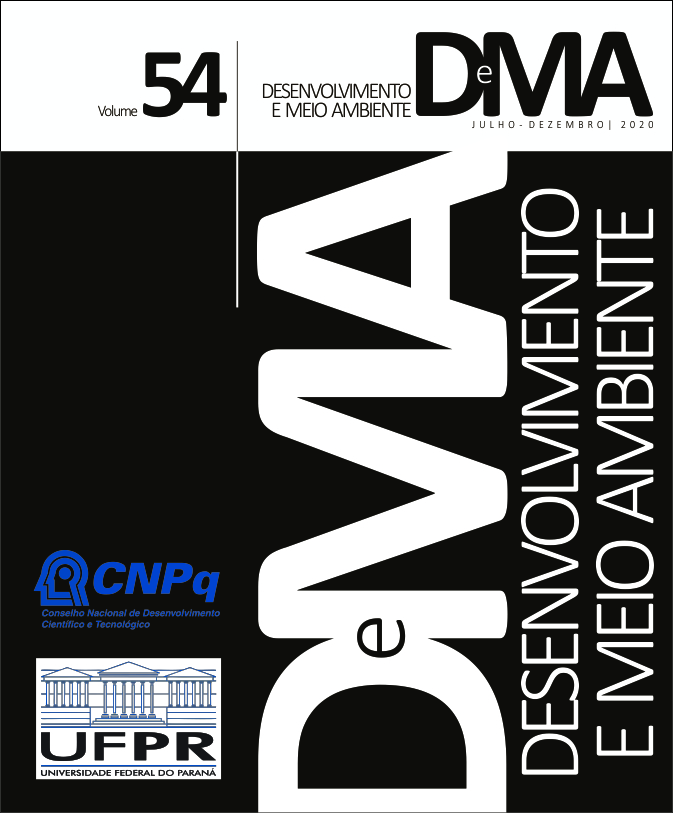Modelling susceptibility of Abrolhos reefs to coral bleaching
DOI:
https://doi.org/10.5380/dma.v54i0.69022Palavras-chave:
coral reefs, bleaching, modeling, multi-criteria analysisResumo
Coral reefs suffer many threats, including coral bleaching, which occurs mainly in response to environmental variables such as positive temperature anomalies. However, there is a need to explore potential synergies between environmental and anthropogenic variables. The objective of this work is to use multi-criteria analysis to explore associations between environmental and anthropogenic variables in order to estimate in a spatially explicit way the susceptibility of the different Abrolhos reefs in Bahia, Brazil, to coral bleaching. Our results show that from 2001 to 2016 there was a sharp increase in the reef areas with higher susceptibility to bleaching. While in 2001, 20% of the reef area presented low susceptibility to bleaching and 80% showed medium susceptibility, in 2016, 19% of the area showed medium and 81% showed high susceptibility. 2016 presented the highest susceptibility among the years used in the study, suggesting a higher percentage of bleached colonies, which is corroborated by the fact that this year was considered by NASA and NOAA as the hottest year since 1880. Results also show that bleaching pattern is spatially differentiated. The reefs from the coastal arch of Abrolhos present the greater susceptibility to bleaching. Exception is Timbebas reefs which, although located in the coastal arch, are more similar to the outer arch reefs, wich are less susceptible to bleaching.
Downloads
Publicado
Como Citar
Edição
Seção
Licença
Os Direitos Autorais sobre trabalhos publicados nesta revista são do autor, com direitos de primeira publicação para a revista. O conteúdo dos trabalhos publicados é de inteira responsabilidade dos autores. A DMA é um periódico de acesso aberto (open access), e adota a licença Creative Commons Atribuição 4.0 Não Adaptada (CC-BY), desde janeiro de 2023. Portanto, ao serem publicados por esta Revista, os artigos são de livre uso para compartilhar (copiar e redistribuir o material em qualquer suporte ou formato para qualquer fim, mesmo que comercial) e adaptar (remixar, transformar, e criar a partir do material para qualquer fim, mesmo que comercial). É preciso dar o crédito apropriado, prover um link para a licença e indicar se mudanças foram feitas.
Os conteúdos publicados pela DMA do v. 53 de 2020 ao v. 60 de 2022 são protegidos pela licença Creative Commons Atribuição – Não Comercial – Sem Derivações 4.0 Internacional.
A DMA é uma revista de acesso aberto desde a sua criação, entretanto, do v.1 de 2000 ao v. 52 de 2019, o periódico não adotava uma licença Creative Commons e, portanto, o tipo de licença não é indicado na página inicial dos artigos.




